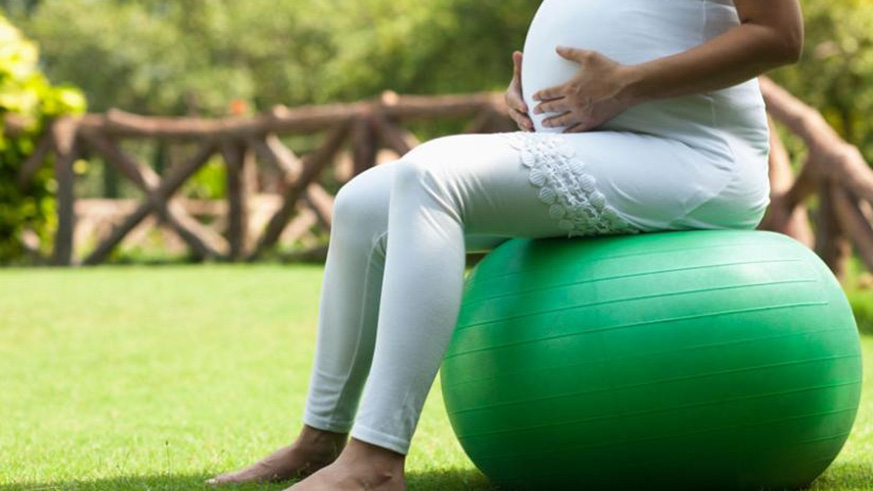

Exercise is important when pregnant; however, women ought to consult their doctor, or a physiotherapist, for advice on safe exercises that won’t harm them or the baby.
Eric Mutabazi, a physiotherapist at King Faisal Hospital, says physical changes during pregnancy result in softening of the ligaments and increased joint laxity in preparation for the birth. It takes approximately three to six months for the body to return to its pre-pregnant state after the birth.
Dr Iba Mayele, an obstetrician gynaecologist at Gynaecology Clinic Galien, Kimironko, says that maintaining a regular exercise routine throughout pregnancy can help one stay healthy and decrease discomfort such as backache and fatigue.
He advises women who have never exercised regularly before to begin with an easy exercise programme but only after consulting a healthcare professional.
Exercise can be harmful if one has a pregnancy-related condition such as bleeding, spotting, low placenta, threatened or recurrent miscarriage, previous premature birth or history of early labour and weak cervix, he says.
"Back pain is common during pregnancy, the normal spinal curves become exaggerated to counter-balance the enlarging abdomen, breathlessness occurs in later pregnancy when the enlarged uterus pushes upwards against the lungs and inhibits the movement of the diaphragm, which may contribute to difficulty in removing lung secretions and increased breathlessness during exercise,” Mutabazi explains.
He says that lower rib pain related to upward pressure of the growing foetus, and urinary incontinence related to the downward pressure of the enlarging uterus, swelling of the lower limbs and generalised fluid retention and calf cramps are common in pregnancy.
SAFE EXERCISE
Mutabazi advises that walking and swimming, comfortable standing, sitting and lying down positions, together with strengthening, mobilising and stability exercises will assist in managing the pregnancy.
Brisk walking or cycling are the most effective activities to try during pregnancy, Mayele explains.
Mutabazi says that pain in the joints at the front and back of the pelvis occurs commonly around 29 to 32 weeks, an elastic binder worn low below the belly to give support to these pelvic joints while standing and walking can provide significant relief. Stretching and separation of the abdominal muscles as a result of the growing foetus require care with exercise.
"A therapist with expertise in exercise during pregnancy and the post-natal period should lead accurate antenatal exercises (including abdominal and pelvic floor exercises) early in the pregnancy, and should encourage their use throughout pregnancy and the postnatal period,” he notes.
RISKY EXERCISE
Mutabazi says that pregnant women are advised to modify their physical exercise programme during pregnancy; they should avoid contact sports as the body goes through another phase of hormonal and physical change during the period of pregnancy.
He adds that the effects of the hormones relaxing are maintained for up to 12 weeks after birth, and this has implications as the joints and muscles are most affected by the changes of pregnancy.
The intensity of exercise needs to be restricted during this period and postnatal exercises prescribed by a therapist trained in this area are recommended, either individually or in a group setting. The cardiovascular system returns to normal within two weeks, with blood volume returning to pre-pregnant levels, Mutabazi cautions.
"Some exercises and activities can be harmful if done when pregnant, for instance; activities where falling is likely, such as skiing, and horseback riding, contact sport like football, basketball and volleyball, any exercise that may cause even mild abdominal trauma, and activities that require extensive jumping, among others,” Mayele says.
However, Mutabazi says that pregnant women should not stop exercise even though muscle cramps are common, especially during late pregnancy. These may be caused by altered blood flow and pressure of the uterus on the nerves or dietary issues.
Mutabazi advises that calf stretches, compression stockings, and medical advice on nutrition should be continued throughout pregnancy.
editorial@newtimes.co.rw


